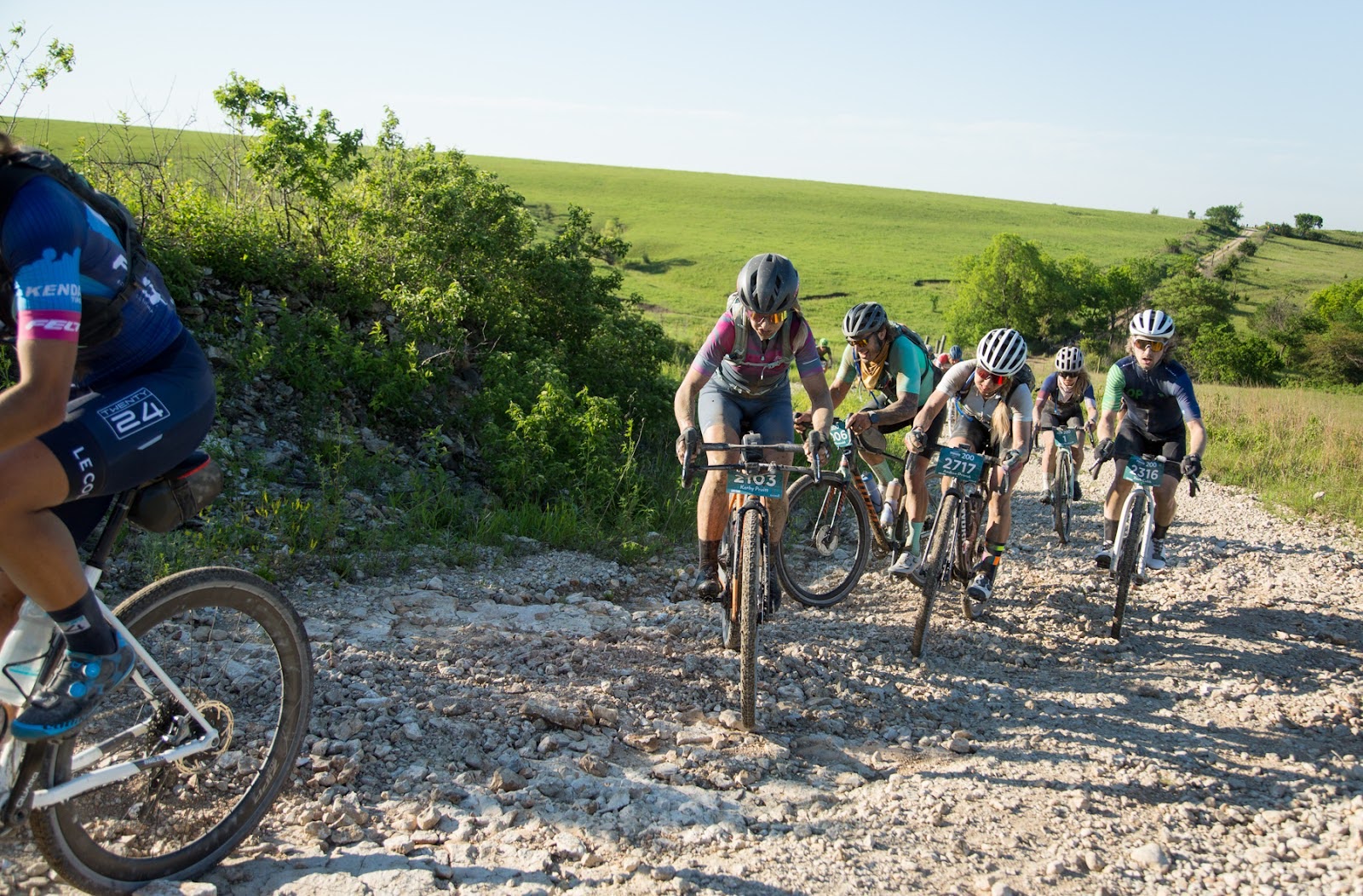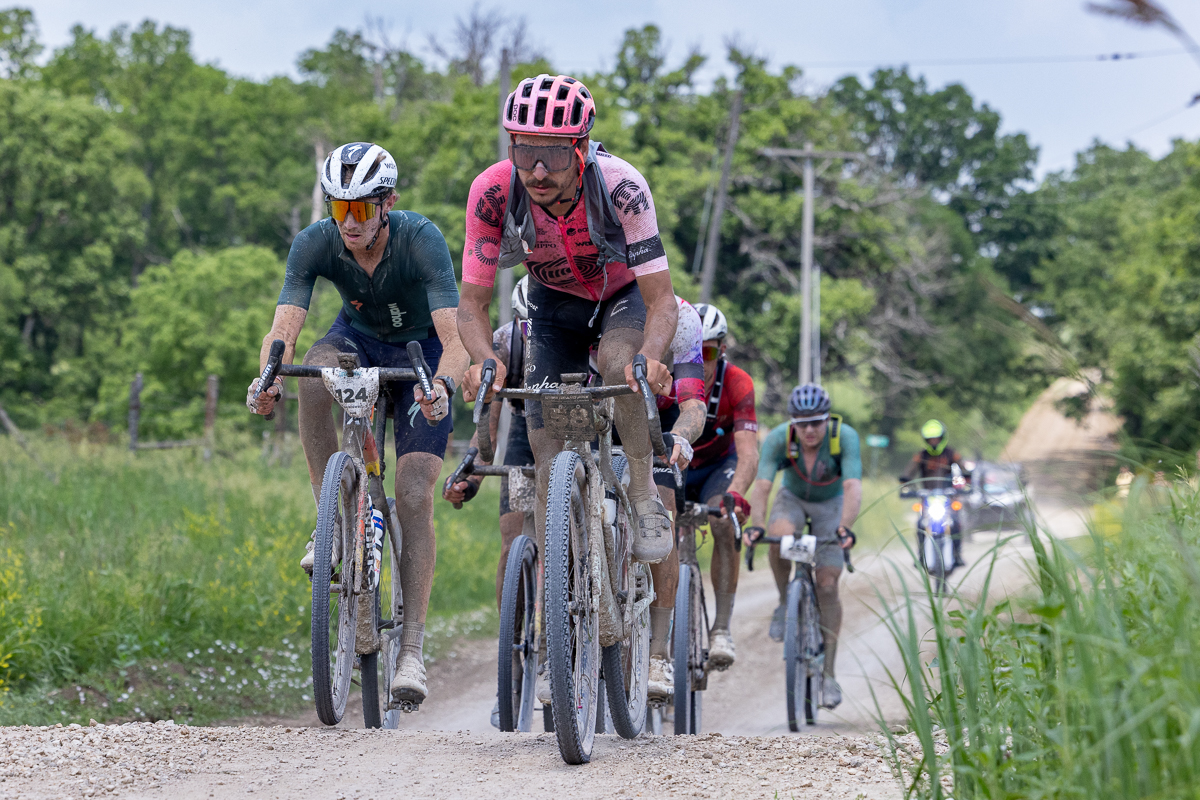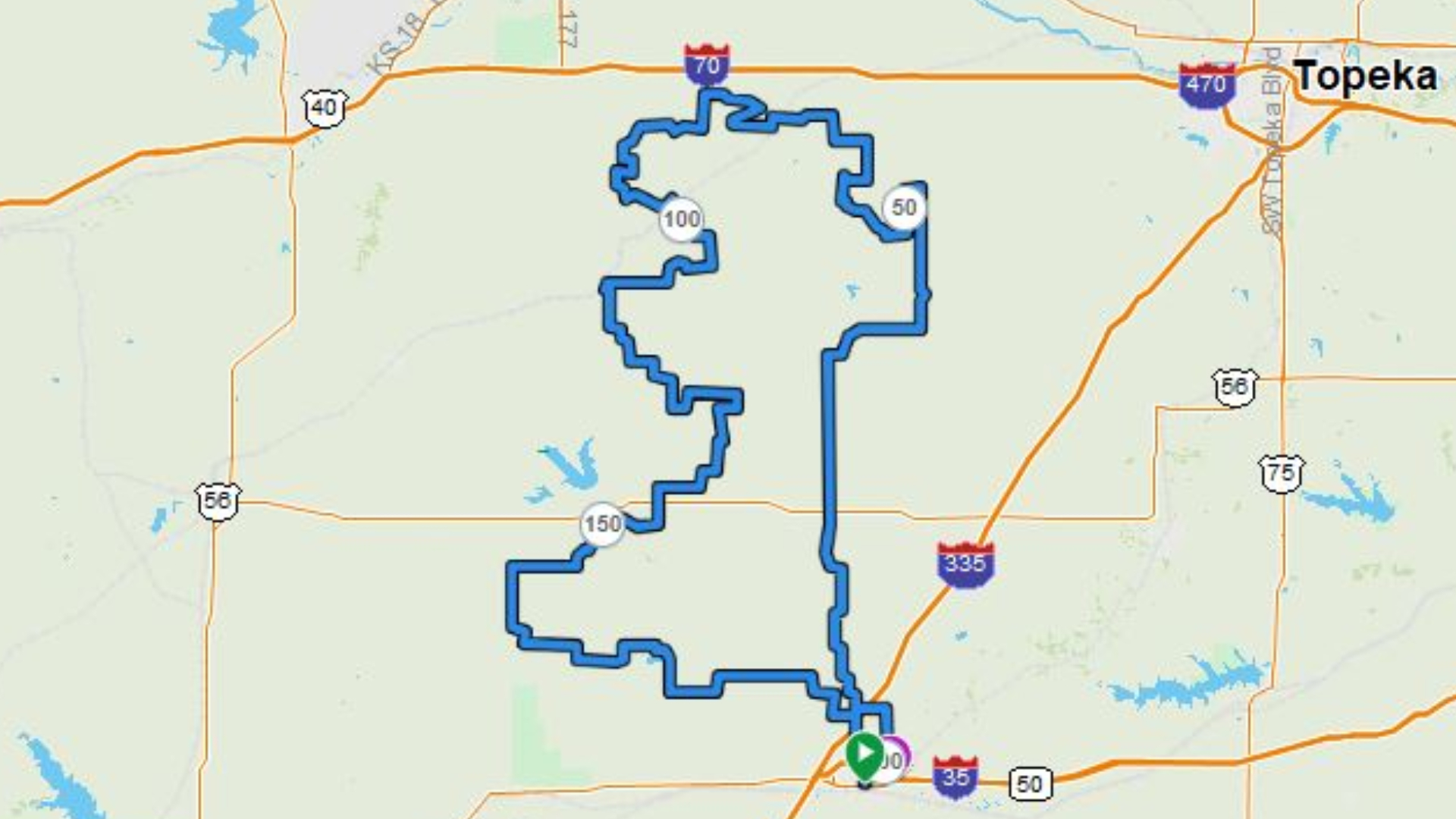
Equipment and handling skill will play a big part in who triumphs at the world's marquee gravel race, Unbound Gravel, in a few week's time.
The course description revealed today features the words' rocks', 'rocky,' 'challenging', and 'flat tires'.
Following the mud-bogged mayhem of the 2023 event, characterized by ripped-off derailleurs and broken frames, the 2024 edition promises a challenge of a different kind with its chunkiest and most technical course yet.
Let's delve into the details of the flagship 200-mile race, attracting a diverse field of contestants, from Lifetime Grand Prix professionals to amateur enthusiasts and even Olympians, including renowned cyclists like Greg van Avermaet.
The 2024 Unbound Gravel Course: chunkier than ever

Taking place on June 1st, the race through the Kansas Flint Hills offers five race distances and attracts thousands of participants to the small town of Emporia, in the middle of the United States.
Held since 2006, the infamous 200-mile course is a test of endurance, self-sufficiency and equipment. In addition to needing to fuel oneself for 11+ hours of riding, the sharp flint rocks are notorious for slicing tires and dashing podium aspirations. Along the way, riders also need to contend with the undulating terrain, exposed sun-baked roads, headwinds and, if at all wet, soul-sucking mud. For those seeking the ultimate challenge, there's a 350-mile option known as Unbound XL, which sees riders suffering for 24 or more hours.
For 2024, the Unbound Gravel race heads north, a direction it has only ventured twice before. Rocky and technical, the 200-mile course may just be its most challenging yet, organizers say.
The course covers 202.9 miles of harsh gravel roads with approximately 11,000 feet of climbing—more than its previous north course editions. Surface types will range from fast gravel roads to chunky doubletrack and only a little bit of pavement, with 92% of the course marked as unpaved. There will be two checkpoints where riders can meet their crews and receive outside support and two neutral water support 'oases.'
Course highlights

After a fast start, the first test comes early at 25 miles into the race. Kaw Reserve Road is a rugged and technical double track challenge where the sharp rocks will challenge riders' tire choices.
Then at mile mark 45.5, Divide Road marks the toughest stretch of terrain of the 203-mile route. It's a straight shot but is will be a "relentless onslaught of rough, rocky paths," organizers say.
The first checkpoint takes place in the northernmost point of the course, in the town of Alma. From here, the climbing starts, including the Prairie View Road climb, Volland Road climb and Little Egypt; a steep and storied ascent over chunky rocks where decisive race-winning moves were made in previous editions of the race.
The longest climb of the day comes 175 miles into the race and is called Kahola Hill. This is an exposed and often windswept challenge before tackling a series of rollers where wind could play a significant factor as well.
This year, the course approaches the finale in Emporia from the east, but the infamous last punch to the gut, Highland Hill, remains a feature before entering the finish straight on Commercial Street.







